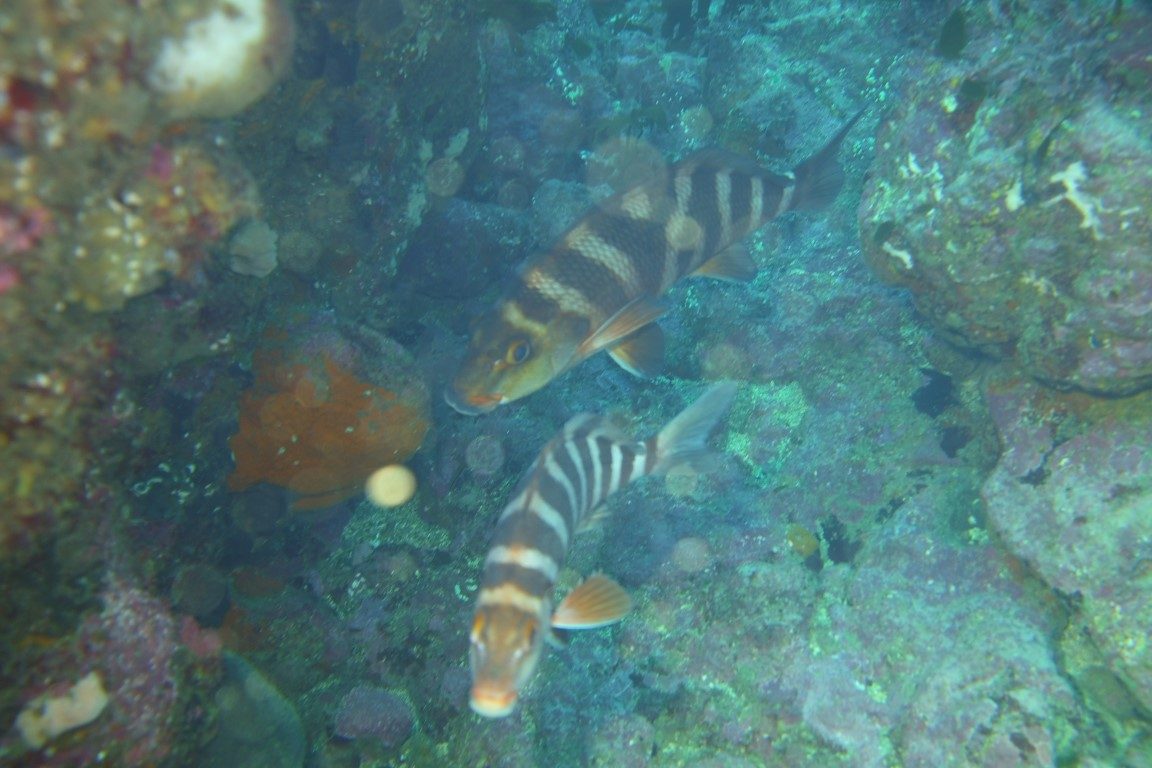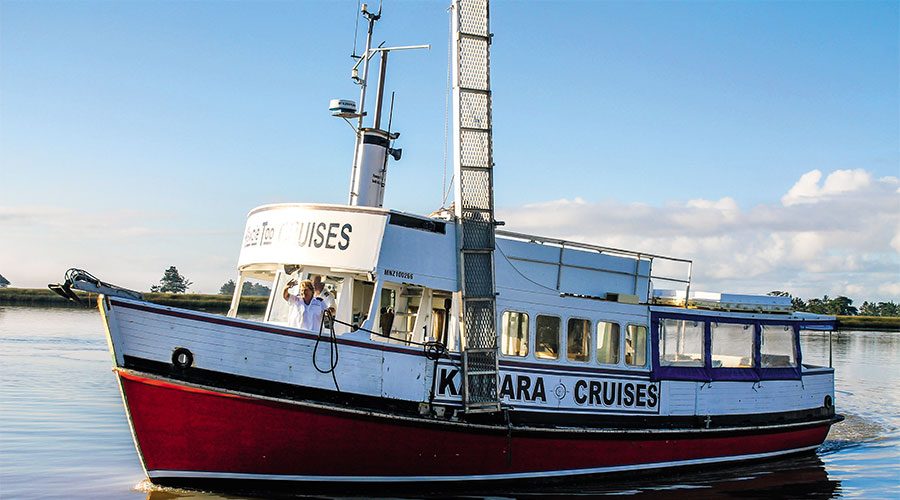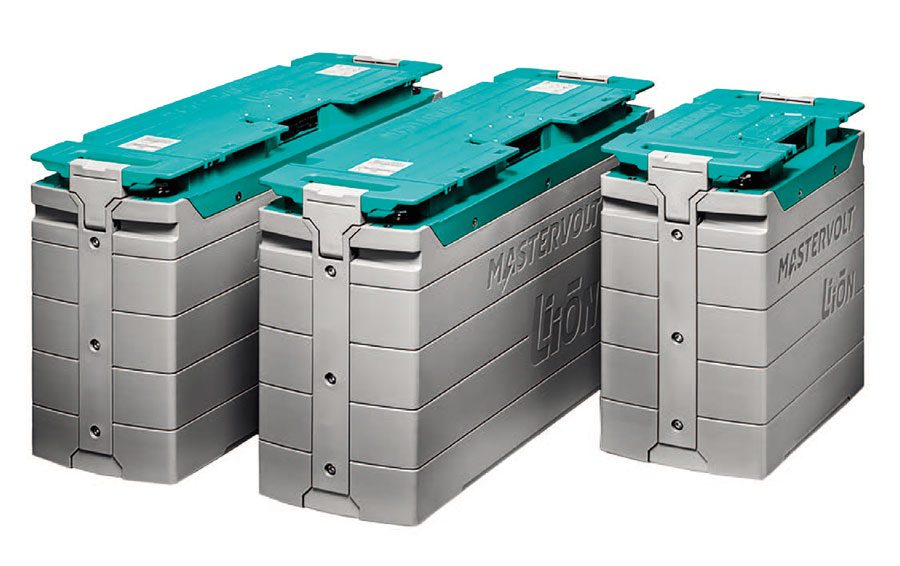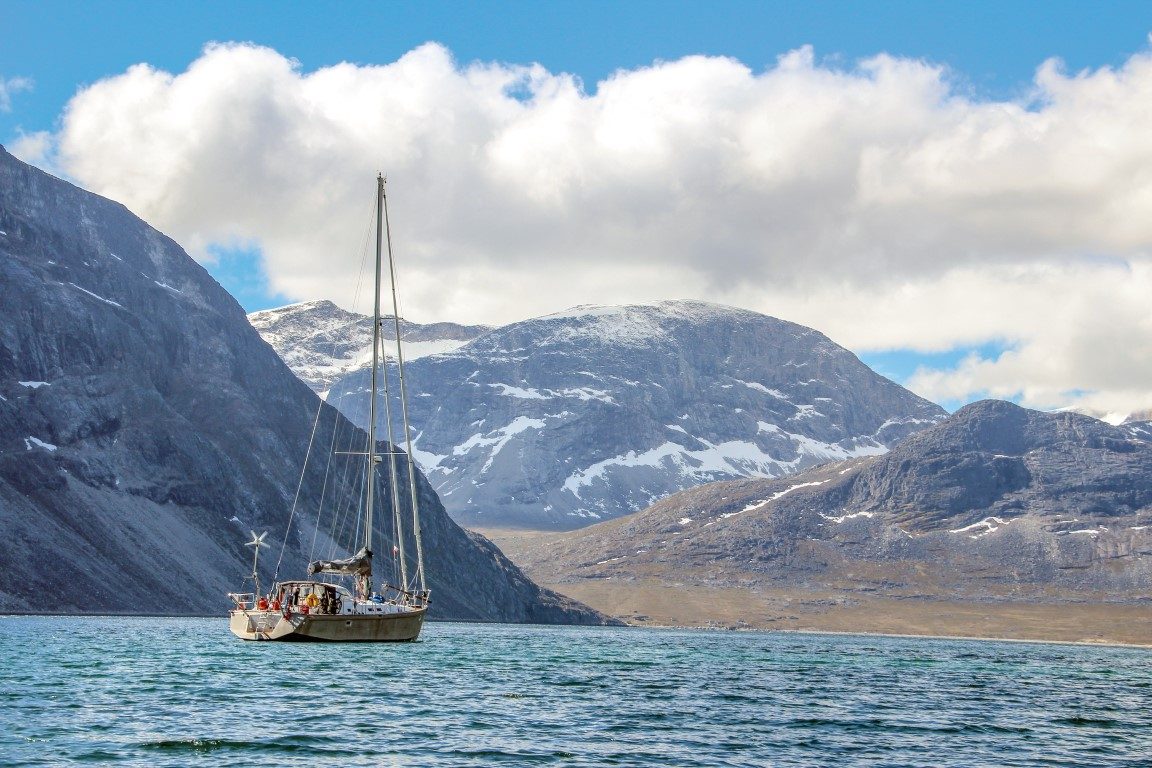

Yachts and icebergs. They are not supposed to meet because it can all end in tears, usually below the waterline. Story and photos by Rebecca Hayter.
My iPhone had a serious fault. I knew that because its text made no sense: “Would you like to sail through the North West Passage with me?” Except that the text came from my friend Ross Field and that is the sort of text he would send.
Ross was planning to sail from England, across the North Atlantic to Greenland where we would tootle up the coast to a waiting area for the North West Passage. I should plan for four months and book an open-ended air fare, Ross said. I pictured myself in a blizzard, fending off icebergs and using Superglue to reattach my fingertips.

But Ross’s yachting achievements include winning the 1994 Whitbread Round the World Yacht Race in his Whitbread 60, Yamaha, so hopefully my fingers would be in good hands. And at least I had actually seen Greenland, albeit from the cockpit of an aircraft way back before September 11. The world’s second-largest island had appeared like a vast painting of white-glaciered mountains that pierced a black, chilling sea.
July 2017, I was at sea level on Nuup Kangerlua Fjord, Greenland in the cockpit of Ross’s aluminium yacht. We threaded our way through natural ice sculptures, like illustrations in a fairy tale: a startled dinosaur, a rabbit that became a frog and an icy, burnt-out powerboat with a dirt-blackened interior.
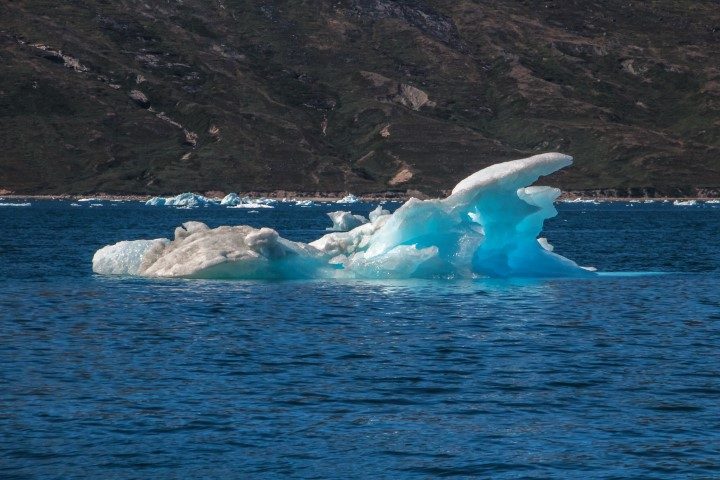
Ross had bought his 55ft Joubert Nivelt expedition yacht in France in 2015 and refitted her in England. After years of naming yachts for sponsors, he had named Rosemary for himself – his drag name from his days on Peter Blake’s Whitbread Race winner, Steinlager 2.
It was three years since Ross had broken his back during the 2011 two-handed Global Ocean Race and four years before he would turn 70. This pensioner wanted to go adventuring while he could.
“People often ask: why buy a boat like this?” Ross blogged on Facebook. “Simple, boats like this are a rarity, like a rare piece of art. Rosemary is not the most beautiful looking boat, but I like her, she’s different.”
He could have sailed her back to New Zealand via the Caribbean and Pacific but that has been done a million times. The Mediterranean is politically unstable and the Red Sea has pirates. Cape Horn? He’d done it five times – so he decided on the North West Passage.

For most of the 20th century, the North West Passage was icebound but, thanks to global warming, it is opening most years to give expedition cruisers a new frontier. It’s also a headache for Canadian and American Coastguards who baulk at sending US$850m ice breakers to rescue 60ft fibreglass yachts.
As a gateway to the passage, Greenland has emerged as an Arctic training ground: a relatively safe place to see whales, icebergs, polar bears and even atmospheric disco lights.
So here’s the spoiler: Ross, Rosemary and I didn’t do the North West Passage – we settled for Greenland. We arrived at the port of Nuuk, the world’s northernmost capital at latitude 64° 10’ N, after two weeks at sea and joined a raft-up against a rusty old crane barge. Around us, the world’s most stoic fishing fleet constantly re-arranged itself and small powerboats took their owners out to catch dinner. Above and below water, rubbish dulled the scene.
Nuuk has a population of just 16,500. Its streets are wide, dull and grey, littered with cigarette butts and domestic detritus. We were told that it was even worse until about 15 years ago, when it was quite normal for residents of a third-floor apartment to toss an old sofa out the window and leave it there.
The crews from the offshore fishing fleet hung around the bars and stayed at the Seamen’s Mission where we got our laundry done. Young people of Inuit and Greenland descent wandered with the slow gait of the unemployed and tourists checked their emails at the stunning timber curve of the new Katuaq Cultural Centre. Colourful playgrounds and newly commissioned sculptures in Inuit style seemed to be making progress against the greyness of old apartment blocks.
In the supermarket, I gave up on fresh vegetables and settled for imported frozen vegetables. My yearning for a good steak was more complicated. Greenland is a whaling nation and when Ross helped a woman load huge slabs of meat into her car for a wedding, it answered my question about the packaged meat with wide, white fatty bands that graduated into perfect circles of bright red.
Greenland’s reliance on imported goods makes food and alcohol expensive but Rosemary’s drink of choice, diesel, was heavily subsidised for the fishing industry. Ross was so excited to get 1,200 litres at NZ$0.75 a litre he shelled out for an extra bottle of gin.

Most days, another one or two yachts arrived. Most wanted to know: Will the North West Passage open this year?
The local harbour master said it wouldn’t. The ice charts were undecided. Most yachts heading for the passage were bare aluminium like Rosemary; crews from fibreglass-hulled yachts looked enviously at her raw strength. Inside, even as snow fell on the decks, the pot belly diesel heater in the for’ard saloon kept us toasty warm.
With the jury still out on the North West Passage, we disengaged our mooring lines from our neighbours and motored out into Nuup Kangerlua Fjord. Sermitsiaq Mountain glistened with snow as the autopilot steered us into the valley. Then the helm spun like a roulette wheel. Oh, the Earth’s magnetic field was bored again.
It had been playing with the autopilot since we first arrived off Greenland. In high latitudes ships’ compasses, even electronic ones, are affected by the dip of the Earth’s magnetic field as it approaches the North or South Pole. That in turn affects the autopilot, especially if it is set for due North: 000°, as we often were. It would have been a good day to sell Ross a gyro compass but with no salesman at hand, he decided to swing the compass he had.
Ross read the manual and pushed buttons. My job was to spin Rosemary twice through 360° in exactly two minutes, or three degrees every second. We had two attempts and the autopilot continued to make unplanned manoeuvres.
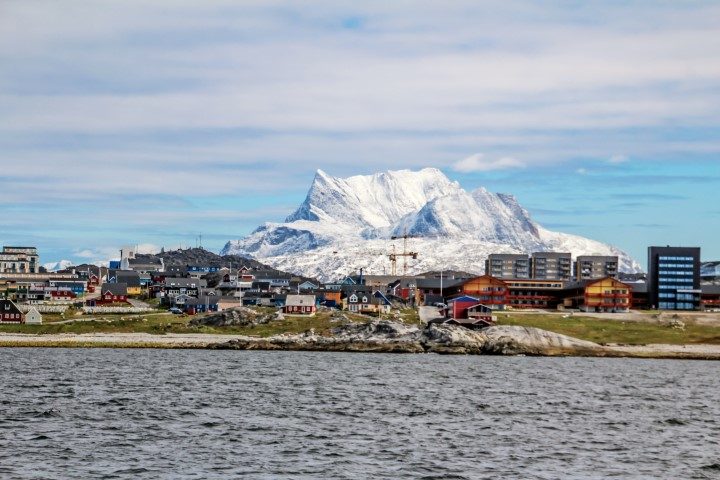
The top-performing crew member was the Spectra watermaker, which did its work in double-quick time since the water in the fjord was mostly melted ice anyway. In his ocean racing days, Ross says his crew used to buy a top-line watermaker and remove its electronic tasting mechanisms to save weight and improve reliability. Spectra liked the idea and offered the watermaker as standard. Instead of electronics to test the salinity, it uses the human tongue.

We turned off the main fjord to anchor overnight at Qooqqut, a low-slung valley dominated by a steep mountainside – it’s a powerful amphitheatre for music festivals but unfortunately not on our day. We took the dinghy ashore to look around the small baches graced with wind generators and fishing gear; two whale jawbones delineated a picnic area. The shrubby plant life reminded me of New Zealand alpine.
Two years ago, a cafeteria opened here but burglars broke in and stole the owner’s rifles. The next day a polar bear showed up. It was presumed to have come down on drift ice from the north and wandered overland. By then it was hungry and like a bear with a sore head, so, without his rifles, the owner had to hole up in his cafeteria and await rescue from Nuuk. We heard other stories like this; they never ended well for the polar bear.
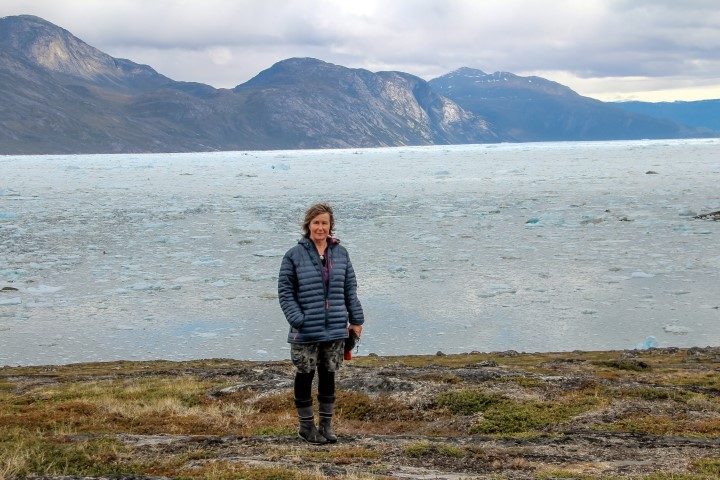
Later, as the sun shed a gentle rose light on this 24-hour day, I watched an eagle lift from the beach. Before Greenland, I’d never seen an eagle in the wild. I could see the massive power in the depth of its wings and the control of the outward curving feathers. The eagles were usually escorted by two ravens, like fighter pilots escorting a bomber. Apart from fulmars, we had seen few birds in the North Atlantic and I missed them.
The next morning, we turned into the main fjord and two hours later came to an intersection with enough options to justify a roundabout. One was blocked by a jumble of icebergs from a glacier. I took the third exit for Uummannap Sullua Fjord, the way to Kapisillit, Greenland’s only spawning ground for salmon.
For a country without trees, Greenland has a lot of wooden houses and Kapisillit’s brightly coloured settlement beckoned us to anchor in its sheltered bay.
“That’s enough chain,” Ross called and shut down the engine.
“Ross, it’s not nearly enough. We’re in eight metres.”
“It’s plenty.”
Our boots crunched on the stony beach as a family came to meet us, excited to see a yacht so far inland. Knud and his wife Tina showed us their Targa boat, Smila. Knud works in the fishing industry: “Not whales,” he assured me, before I had asked. Like most people at Kapisillit, they were based in Nuuk and came here for weekends. They told us that in Greenland, people get a permit to build a house but they never own the land.
We walked over to the next bay where Christian, a Dane, and his friend Austin, a Norwegian, invited us in for coffee. Christian had a faraway look in his eye every time he looked at Rosemary so we invited them onboard and then invited ourselves on a fishing expedition at the river mouth. They loaned me a fishing rod and a headnet; the sandflies were like flying leeches that drilled through my thermals.
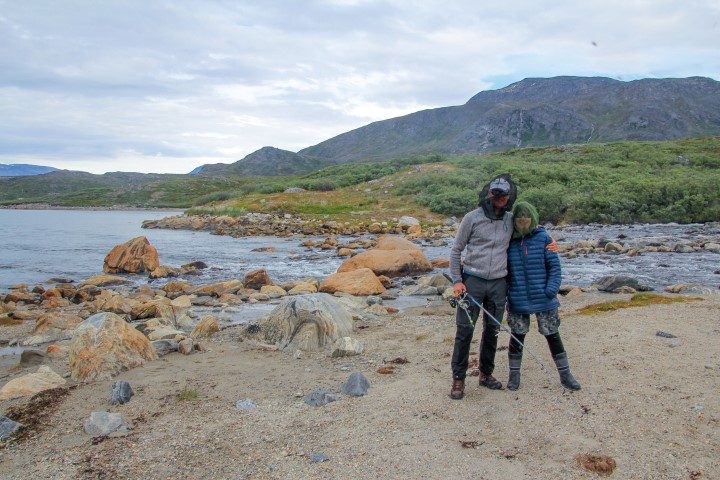
The fishing was excellent but only for the sandflies so I started walking back while Ross took the dinghy. As the breeze freshened, I tried to jog in my seaboots to see if Rosemary was still on her anchor. She wasn’t.
“Beckie must have studied the art of anchoring at some anchoring school,” Ross muttered later on Facebook, having recaptured Rosemary. “Not having to anchor much in my years of yachting, I decided that I had better listen.”
Next day, we left Rosemary on about 500m of chain and took the dinghy across the bay with Christian and Austin to walk over to Kangersuneq Isfjord, packed with ice from a glacier at its head. Christian said I might see an Arctic fox or a reindeer. The closest I got was some poo. “Reindeer,” Christian said. So close.
We motored back through the mountains to Nuuk, wending our way through the ice sculptures released from Kangersuneq Isfjord. After the pristine beauty of the ice, Nuuk’s shabby-chic charm had worn thin so we headed north to Disko from where icebergs cruise like ships down the coast.

